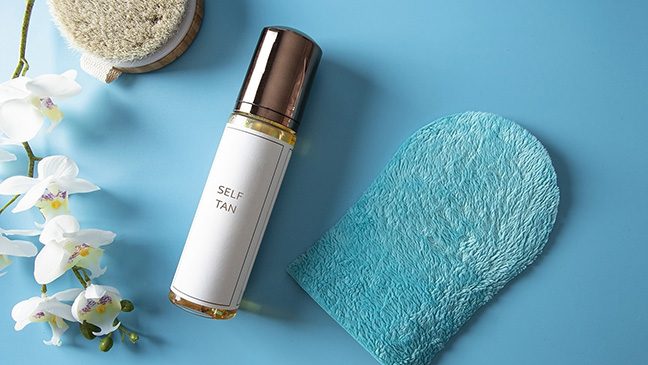request an appointment online.
- Diagnosis & Treatment
- Cancer Types
- Skin Cancer
Get details about our clinical trials that are currently enrolling patients.
View Clinical TrialsSkin cancer is the most common type of cancer in the United States. More than 2 million cases are diagnosed each year. About 20% of people in the United States will have skin cancer at least once by age 70.
Skin cancer is the most common type of cancer in the United States. More than 2 million cases are diagnosed each year. About 20% of people in the United States will have skin cancer at least once by age 70.
Skin cancer can affect people of all skin tones. It develops when the cells of your outermost layer of skin, called the epidermis, grow uncontrollably. The epidermis is primarily composed of three types of cells -- squamous cells, basal cells, and melanocytes. The type of cancer depends on the layer in which it starts.
The three most common types of skin cancer are:
Basal cell carcinoma: Basal cell carcinoma is the most common type of skin cancer. It originates in the basal layer of your epidermis, from which new skin skin cells grow. Basal cell skin cancers are slow growing and seldom spread, but they can invade and destroy underlying tissues and bone if left untreated. Read more about basal cell carcinoma.
Squamous cell carcinoma of the skin: Squamous cell carcinoma of the skin is the second most common type of skin cancer. It originates in your squamous cells, which make up most of your epidermis. It can grow more rapidly than basal cell carcinoma and is more likely to metastasize. It is also more likely to invade and destroy underlying bone and muscle if not treated. However, most cases are not life threatening. Read more about squamous cell carcinoma of the skin.
Melanoma: Melanoma is cancer that begins in the cells that produce skin pigment. It is less common than basal or squamous cell skin cancers, but it is more dangerous and can be deadly. If caught early, there is nearly a 97% chance for cure. Read more about melanoma.
Additional, rare skin cancers include:
- Kaposi sarcoma, a rare skin cancer characterized by the presence of purple, red or brown lesions on the skin. It is caused by a virus and tends to affect people with suppressed immune systems.
- Merkel cell carcinoma, which appears as red, shiny nodules on the face, hands and neck. Learn more about Merkel cell carcinoma.
- Sebaceous gland carcinoma, a rare form of cancer that begins in the sweat or oil glands of your skin.
This page focuses on basal cell carcinoma and squamous cell carcinoma, which are sometimes referred to as non-melanoma skin cancer. When found early, most cases of non-melanoma skin cancers are curable.
Melanoma is more aggressive than non-melanoma skin cancers and is treated differently. More information on melanoma can be found on our melanoma disease page.
Skin cancer symptoms
In general, any new or changing spots on your skin that persist for two weeks or more should be brought to your doctor’s attention. Skin cancer often has no symptoms in its early stages, though symptoms can appear at any point.
Skin cancer symptoms may include:
- A new spot on the skin or
- A changes in the size, shape or color of an existing spot. These changes can vary greatly so there is no one way to describe how a skin cancer looks.
- A spot that is itchy or painful
- A non-healing sore that bleeds or develops a crust
- A red- or skin-colored shiny bump on the top of the skin
- A red rough or scaly spot that you can feel
- A growth with a raised border and central crust or bleeding
- A wart-like growth
- A scar-like growth without a well-defined border
Skin cancer symptoms can vary depending on the type of skin cancer and its location on the skin. Below are general descriptions of the various symptoms associated with specific skin cancer types.
Basal cell carcinoma usually appears on the face, neck, arms, legs, ears and hands -- areas with high sun exposure. However, it can appear in other areas as well. Signs of basal cell carcinoma include:
- Pearly or waxy bump on the skin
- Flat, rough, or scar-like patch on the skin
- A sore that bleeds, doesn't fully heal, or that reoccurs
Visit our basal cell carcinoma page for more information.
Basal cell carcinoma pictures

A pigmented basal cell carcinoma. The shiny areas, speckled pigment and asymmetrical shape are features of this subtype.

A nodular basal cell carcinoma. This ulcerated growth looks like a cut, but it will not heal on its own.

This nodular basal cell carcinoma is ulcerated, or with an open sore. It has developed on the patient’s face, a common spot for these cancers to form.

asal cell carcinoma often develops on the head and neck area. This growth features a dome shape with a central depression and ulcer.

A nodular basal cell carcinoma on a patient’s back. This growth shows three classic elements of a nodular basal cell carcinoma: a pearly center, a “ro

A pigmented basal cell carcinoma. The shiny areas, speckled pigment and asymmetrical shape are features of this subtype.

A nodular basal cell carcinoma. This ulcerated growth looks like a cut, but it will not heal on its own.

This nodular basal cell carcinoma is ulcerated, or with an open sore. It has developed on the patient’s face, a common spot for these cancers to form.

asal cell carcinoma often develops on the head and neck area. This growth features a dome shape with a central depression and ulcer.
Squamous cell carcinoma also tends to develop in areas of high sun exposure. In some cases, squamous cell carcinoma can affect areas that are not exposed to sunlight. This is especially the case for people with darker skin tones. Signs of squamous cell carcinoma include:
- A firm, red nodule
- A scaly or crusty lesion with irregular borders
- Painful or itchy skin lesion
Visit our squamous cell carcinoma page for more information.
Melanoma can occur anywhere on the body and may develop out of existing moles. In people with darker skin tones, melanoma tends to occur on the palms or soles of the feet. Signs of melanoma include:
- Change in the appearance of a mole
- Development of a large brown spot, often with irregular edges
Visit our melanoma page for more information.

Skin cancer risk factors
Anything that increases your odds of developing skin cancer is a risk factor.
Skin cancer risk factors include:
- Ultraviolet light (UV radiation): Extensive lifetime sun exposure or occasional intense exposure, especially without sunscreen
- Living at a high altitude or in a sunny climate
- A history of sunburns
- Tanning bed use
- Age: Sun exposure increases with age, and older patients tend to be at higher risk
- Having a fair complexion, blond or red hair, freckles, blue eyes and/or a tendency to sunburn.
- Being immunocompromised, typically due to taking immunosuppressive drugs.
- Family history of skin cancer
- Having many moles, especially abnormal moles that are large or have an irregular shape (dysplastic nevi)
- A personal history of skin cancer: Having skin cancer once puts you at higher risk for developing skin cancer again
- Certain rare genetic disorders, including xeroderma pigmentosum and basal cell nevus syndrome.
- Previous serious skin injuries, such as a major scar or burn.
- Actinic (solar) keratosis. This is a precancerous lesion that may appear as rough, red and scaly patches on the skin. It may be tender and is often more easily felt than seen. Like skin cancer, actinic keratosis usually is found on sun-exposed areas of the body. About 5% develop into a non-melanoma skin cancer.
Not everyone with risk factors gets skin cancer. However, if you have risk factors, it’s a good idea to discuss them with your health care provider.
Learn more about skin cancer:
Some people have an elevated risk of developing skin cancer. Review the skin cancer screening guidelines to see if you need to be tested.
Behavioral and lifestyle changes can help prevent skin cancer. Visit our prevention and screening section to learn how to manage your risk.
In rare cases, skin cancer can be passed down from one generation to the next. Genetic counseling may be right for you. Visit our genetic testing page to learn more.

MD Anderson is #1 in Cancer Care
9 sunscreen myths debunked
How does sunscreen work? Understanding UV protection
What happens when you get a sunburn
5 things to know about raised moles
Need a punch biopsy? Here’s what to expect
Why choose MD Anderson for skin cancer treatment?
At MD Anderson’s Ben Love/El Paso Corporation Melanoma and Skin Center, your skin cancer treatment is personalized to provide the most advanced therapies with the best outcomes and fewest side effects.
Our skin cancer program is one of the largest in the nation. This gives us a level of experience and expertise found in few other centers.
Renowned experts from multiple disciplines work together to customize your care. Beginning with the most accurate diagnosis possible, we offer comprehensive, specialized care for every type of skin cancer.
We're constantly researching newer, safer, and more effective ways to prevent, diagnose and treat skin cancer. This allows us to offer the best possible treatment at any point in your skin cancer care, ranging from established therapies to new interventions.
You are not alone. There are so many of us who know what it's like to be thrown the curve ball of cancer. Fight on, and never give up.
Kayce Smith
Survivor
Treatment at MD Anderson
Basal and squamous cell skin cancers are treated in our Melanoma and Skin Center.

Featured Articles

6 myths about tanning safety

Can dark-skinned people get a sunburn?

Can dry, scaly skin be a sign of cancer?

Four-time cancer survivor: Why I’m glad I went to MD Anderson

Pregnancy-related skin changes or skin cancer? How to tell the...

Squamous cell carcinomas: 8 things to know about the ‘cancer of...

What is neoadjuvant immunotherapy for skin cancer?

Nodular melanoma: 5 questions, answered
Clinical Trials
MD Anderson patients have access to clinical trials offering promising new treatments that cannot be found anywhere else.
Becoming Our Patient
Get information on patient appointments, insurance and billing, and directions to and around MD Anderson.
myCancerConnection
Talk to someone who shares your cancer diagnosis and be matched with a survivor.
Prevention & Screening
Many cancers can be prevented with lifestyle changes and regular screening.
Counseling
MD Anderson has licensed social workers to help patients, family members and loved ones cope with cancer.
Help #EndCancer
Give Now
Donate Blood
Our patients depend on blood and platelet donations.
Shop MD Anderson
Show your support for our mission through branded merchandise.





